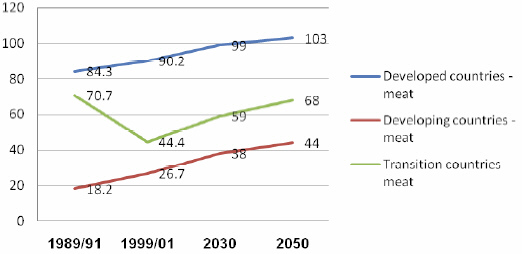



Prevent. Capture. Release. Recycle: Solving GHG Emissions
Efforts to reduce livestock greenhouse gas emissions are being made worldwide, but understanding the effects these changes are really having is more difficult to comprehend than might be initially perceived, writes Adam Anson for TheCattleSite.Most efforts to tackle harmful emissions from livestock generally fall on reducing methane (CH4) and Nitrous Oxide (N2O) gases that are released in the production of meat. However, other issues must be considered. Many of the methods used to reduce one type of emissions may actually result in an increase of another.
The industry also has to take into account the reality of second generation emissions. Every preventative action that the producer undertakes will have some knock-on reaction elsewhere, be it beneficial or detrimental to the environment. These are complex intertwined trends that beg to be understood on whatever level they apply to: be they economical; political; or social.

Source - World agriculture: towards 2030/2050 Interim report Global Perspective Studies Unit, Food and Agriculture Organization of the United Nations, Rome, June 2006.
In the recent report: Cooking Up A Storm, published by the Food Climate Research Centre (FCRC), four main focus areas to decrease the GHG impact of beef and dairy operations were identified. These are: productivity; management systems; outputs and livestock.
To improve productivity the report suggests that producers change their feeding habits. The digestibility of feed can be enhanced by using more proteins and optimising protein inputs. An additional approach is to breed more digestible grasses with a higher sugar content.
Productivity could also be improved by changing the genetic make-up of the animal so that they produce meat and milk more readily and in greater quantities. Cattle could also be altered to produce less harmful emissions, have increased fertility rates and a shorter fattening period.
The specified management practices consider the benefits of modifying the time spent indoors according to weather and season. Energy use could also also be managed and the report suggests that farms could embrace technology to develop their own renewable fuels. For instance, manure and slurries could be used for digestion systems.
Environmentally friendly management systems will see optimised nitrogen and fertiliser inputs. A more rewarding and complex alternative would be to create mixed farming systems that seek to maximise animal-plant nutrient cycling.
Alternative Media: Modern Solutions
There has been a lot of news about strange new science that will help prevent greenhouse gas emissions on beef and dairy farms. Geneticists have touted the benefits of genetically modified animals with altered digestive systems.
One news item touted the benefit of a bovine pill which will limit belching. Whilst capturing emissions to be reused as bioenergy has been widely coined 'cow power'. Similarly a 'gas tax', considered by the US Environmental Protection Agency will charge producers for their animals emissions.
A Reading University scientist recently came up with the Keenan solution involving a wagon that chops and mixes the feed to a consistency the animal can digest, whilst Australian scientist have suggested farming kangaroos as an alternative to beef to help save the climate.
In Denmark, researchers found a significant decrease in methane emissions from slurry when the slurry is acidified. Feeding animals fats and oils also has beneficial effects.
Although the merits of organic farming are hotly contested, a great deal of research boasts the benefits it can have on reducing GHG emissions. Controversially, a lot of research has also highlighted the potential benefits that intensive farming methods have on the environment. Whereas organic farming focuses on reducing the output of emissions, intensive farming methods focus on producing more for less. Researchers have identified GHG hot spots in both proposals.
Organic production is thought to have benefits for soil health. Both soil fertility and its ability to sequester carbon from the atmosphere are of importance to GHG emissions. To achieve these goals many organic systems use legumes for grazing. Due to the beneficial effects of legumes can have for the soil, energy intensive synthetic fertilisers need not be applied. Healthy soil will also help to assure a sustainable future for the farm.
Although research generally finds organic farming to be less energy intensive, beef and dairy operations are often associated with higher levels of Methane and Nitrous Oxide emissions per given quantity of meat in comparison to the more intensive methods, because the output is lower. However, another argument takes into account the higher levels of nutrients by weight found in organic products. The logic states that consumers would not have to eat as much to gain the same amount, therefore, producers could produce less. Although this theory is clearly flawed in reality, it raises an interesting idea.
Throughout the report there is an evident clash between ethics, welfare and energy reduction that begs a question of priority and balance that cannot be answered with figures and statistics alone. An alternative solution would see mankind shoulder the burden to these problems by changing not the behaviour of the animal, but of itself.
According to Cooking Up a Storm we can improve the problems by reducing livestock numbers over and beyond what results from increases in productivity, in combinations with meat and dairy consumption.


